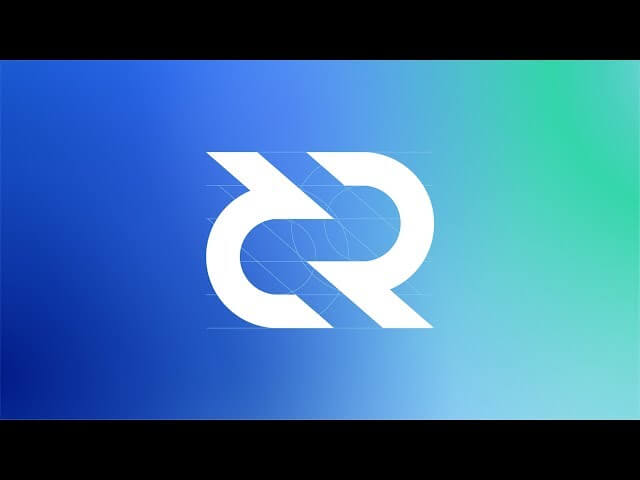Decred (DCR)
Money EvolvedDecred stands for decentralised credit.

Background Behind Decred (DCR)
Decred was introduced in 2014 by an open-source development firm called Company 0 (C0), led by Jake Yocom-Piatt. The project successfully launched its mainnet in 2016, marking a significant milestone in its development.
Before embarking on the Decred project, Yocom-Piatt had gained experience as a developer in the Bitcoin ecosystem. However, he recognized the need to address perceived governance issues within the leading cryptocurrency. This realization prompted him to initiate a new project that aimed to tackle these challenges head-on.
Yocom-Piatt, alongside other core developers, shared a common vision of creating a more democratic cryptocurrency that truly empowers its users. Today, this vision has become a reality through the implementation of a hybrid consensus algorithm known as Proof-of-Work (PoW) and Proof-of-Stake (PoS).
The hybrid PoW/PoS algorithm employed by Decred ensures that users have a say in the decision-making process and can actively participate in shaping the future of the network. This unique approach enhances decentralization and gives users greater control over the direction of the project.
Decred’s commitment to democratic governance and its innovative consensus mechanism has established it as a successful cryptocurrency that empowers its community. The project’s journey from inception to reality exemplifies the dedication of its core developers and their determination to create a more inclusive and user-centric digital currency.
Decred (DCR) Basics
Decred stands out as an innovative project because it leverages the decentralized nature of blockchain technology to prevent monopolies over voting power within the project. One of Decred’s primary objectives is to ensure that all holders of its native token, DCR, have equal decision-making power, preventing large institutions from manipulating votes in their favour.
To achieve this, Decred implements a ticket-holder voting system. This system allows individuals who hold a sufficient amount of DCR to participate in votes regarding the project’s future and operations. Additionally, Decred has developed a dedicated voting platform called Politeia. Through Politeia, users can actively engage in votes, submit proposals, and initiate discussions, fostering an open and transparent governance process.
To secure and uphold these voting rights, Decred utilizes a hybrid consensus mechanism that combines elements of both Proof-of-Work (PoW) and Proof-of-Stake (PoS). In this hybrid model, PoW miners validate transactions, while PoS stakeholders propose and vote on network upgrades, ensuring a balanced distribution of power within the network.
Overall, Decred’s innovative approach involves engineering a hybrid-consensus mechanism that integrates components from both PoW and PoS, providing a robust foundation for decentralized decision-making. The implementation of Politeia as a governance system further reinforces Decred’s commitment to fostering an inclusive and democratic environment, where new ideas can flourish and be voted upon for potential implementation.
Decred Blockchain
Decred combines elements of Proof-of-Work (PoW) and Proof-of-Stake (PoS) to create a hybrid consensus mechanism. This unique approach ensures a fair and decentralized decision-making process where stakeholders can actively participate and have an equal say in the project’s development. With a strong emphasis on security, Decred employs a robust PoW system to validate transactions, while PoS stakeholders provide governance and vote on network upgrades. This ensures a balanced distribution of power and prevents dominance by any single entity.
Decred (DCR) Staking
Decred’s Proof-of-Stake (PoS) mechanism enables individuals who hold and stake DCR to actively participate in the validation and confirmation of transactions. In addition to validating the puzzles solved by Decred miners, PoS stakeholders also have the opportunity to engage in the network’s governance process. By staking their DCR tokens, participants contribute to the security and integrity of the Decred blockchain while gaining the ability to propose and vote on important network upgrades and decisions. This unique combination of PoS and active governance involvement empowers DCR holders to have a direct influence on the development and direction of the Decred ecosystem, fostering a more inclusive and community-driven blockchain platform.
Decred (DCR) Mining
Similar to other Proof-of-work cryptocurrencies, Decred miners spend energy to solve computational puzzles to validate transactions and add blocks to the blockchain.
Decred (DCR) Speed and Transaction Fees
Decred integrates with the Lightning Network, which serves as a layer-2 scaling solution operating on the Decred blockchain. By leveraging the Lightning Network, users can establish payment channels directly between themselves, enabling near-instant and cost-effective transactions. These payment channels facilitate peer-to-peer trading without the need for each transaction to be confirmed on the main Decred blockchain. This integration significantly enhances the scalability and usability of the Decred network, providing a seamless and efficient experience for users while reducing transaction fees and alleviating network congestion. By embracing the Lightning Network, Decred demonstrates its commitment to improving the overall efficiency and practicality of decentralized transactions.
Decred (DCR) Supply
Decred currently has a circulating supply of 14,942,393 DCR tokens out of a total supply of 21 million DCR tokens. Similar to many other cryptocurrencies, the supply of DCR is capped and limited by the software’s rules. This means that the maximum number of DCR tokens that will ever be created is 21 million. This scarcity is designed for value preservation within the Decred ecosystem, ensuring that DCR tokens maintain their utility and potential for long-term growth.
Decred (DCR) Security and Safety
Decred places a strong emphasis on security and safety, aiming to provide users with a robust and trustworthy blockchain platform. The protocol incorporates multiple measures to protect the integrity of the network and, by extension, user’s assets. Its hybrid consensus mechanism – a combination of Proof-of-Work (PoW) and Proof-of-Stake (PoS) – ensures a resilience, as it prevents a slide to centralized control while enchancing the network’s resistance to attacks. Additionally, Decred employs strong cryptographic algorithms and best practices to safeguard user funds and sensitive data. The platform also promotes transparency by allowing users to audit the codebase and actively participate in decision-making through its governance system. With a focus on community-driven security, Decred strives to provide a secure environment where users can confidently engage in transactions and contribute to the platform’s growth with peace of mind.
Decred (DCR) Volatility
As of the time of writing, Decred (DCR) is valued at $14.63 per DCR. Its all-time lowest valuation occurred at $0.43 per DCR, representing a significant increase in value over time. However, it is important to note that Decred is currently trading at approximately 94.95% below its all-time high of $250.02 per DCR, indicating a period of volatility in its price history. Despite this volatility, Decred has also experienced its all-time highest peak, reflecting the potential for substantial gains in value. It is worth considering that the cryptocurrency market as a whole is known for its volatility, and investors should exercise caution and conduct thorough research before making any investment decisions regarding Decred or any other digital asset.
Review and Final Thoughts on Decred (DCR)
The fact that Decred is a well-rounded cryptocurrency project with a solid staff, a robust treasury, and an enthusiastic community. Making it one of the projects that is promising in terms of governance and the use of hybrid algorithms.

